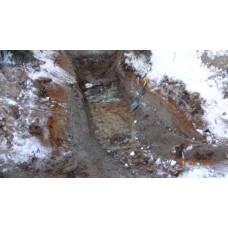Finland, underexplored diamond potential
The Diamond prospective area in Finland is nearly the same size as the Slave Craton in Canada. By analogy with other shield areas, the potential exists for further and significant diamond discoveries in Finland. Furthermore, the late Archean terrain comprising much of eastern and northern Finland is contiguous with the Karelia and Kola–Kuloi cratons in Russia, which contain the major Archangelsk kimberlite province, at the easternmost edge of the shield, and diamond-bearing lamproites at Kostamuksha, near the Finnish border.
It is worth noting that the thick lithosphere area is not limited to the Archaean areas, but extends well into the Proterozoic terrain. However, for reasons not fully understood the other apparently critical factor for economic diamond deposits is an Archean age for the lithosphere to be prospective (Clifford's rule). A Proterzoic/Archean boundary is therefore demarcated and is based on Nd isotopic data where rocks to the NE of the line either are Archean or show evidence of an Archean component in their source region through negative & Ndvalues. The area where all three of these factors overlap favorably is the area most prospective for diamond exploration in northern Europe.
In eastern Finland, kimberlite-hosted mantle peridotite xenoliths suggest that the lithosphere is at least 240 km, one of the thickest localities known anywhere. Since diamonds are formed only at lithospheric depths exceeding 150 km other diamondiferous pipes such as the Terskii kimberlites in the Kola, as well as at Kostamuksha-lamproite and the Archangelsk pipes and Kemozero (kimberlite) attest to a very large region with anomalously thick lithosphere.
Note that although much of Northern Russia is prospective using the above criteria, because of political and financial instability, the region within Russia is not highlighted as a preferred target area at this time.




